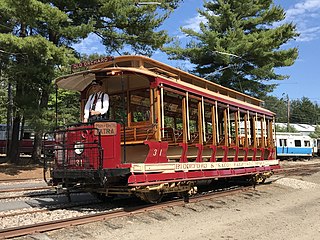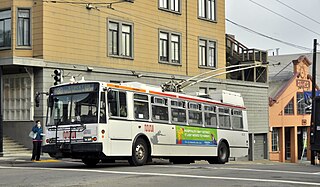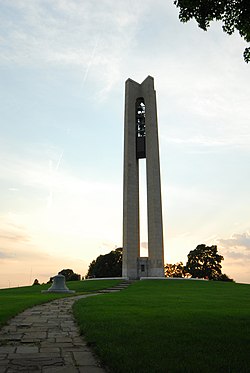The Greater Dayton Regional Transit Authority, formerly known as the Miami Valley RTA, is a public transit agency that generally serves the greater Dayton, Ohio area. The GDRTA serves communities within Montgomery County and parts of Greene County, Ohio, USA. There are 31 routes. RTA operates diesel and electric trolley buses seven days a week, 21 hours a day, and provides services to many citizens within the area. RTA's current CEO is Bob Ruzinsky. In 2021, the system had a ridership of 5,300,500, or about 17,000 per weekday as of the fourth quarter of 2021.

Twin Coach was an American vehicle manufacturing company from 1927 to 1955, located in Kent, Ohio, and a maker of marine engines and airplane parts until the 1960s. It was formed by brothers Frank and William Fageol when they left the Fageol Motor Company in 1927. They established the company in Kent to manufacture and sell buses with a new concept design. The body structure of this new bus was unique in that the body also became the frame and two engines – "twin" engines – were used to allow for larger passenger loads. This concept was patented by William B. Fageol.

Seashore Trolley Museum, located in Kennebunkport, Maine, United States, is the world's first and largest museum of mass transit vehicles. While the main focus of the collection is trolley cars (trams), it also includes rapid transit trains, Interurban cars, trolley buses, and motor buses. The Seashore Trolley Museum is owned and operated by the New England Electric Railway Historical Society (NEERHS). Of the museum's collection of more than 350 vehicles, ten trolley, and railroad cars that historically operated in Maine were listed on the National Register of Historic Places in 1980, as Maine Trolley Cars.

Edward Andrew Deeds was an American engineer, inventor and industrialist prominent in the Dayton, Ohio, area. He was the president of the National Cash Register Company and, together with Charles F. Kettering, founded Dayton Engineering Laboratories Company (Delco), an early innovator in automotive technology. Deeds partnered with the Wright brothers in an early airplane manufacturing venture and led the military aircraft production effort in World War I.

The Montgomery County Historical Society, located in Dayton, Ohio, USA, was designated as official historian of Montgomery County, Ohio, and of the cultural heritage of Ohio's Miami Valley. In 2005, the Society merged with Dayton's Carillon Historical Park to form Dayton History.

Huffman Prairie, also known as Huffman Prairie Flying Field or Huffman Field is part of Ohio's Dayton Aviation Heritage National Historical Park. The 84-acre (34-hectare) patch of rough pasture, near Fairborn, northeast of Dayton, is the place where the Wright brothers undertook the difficult and sometimes dangerous task of creating a dependable, fully controllable airplane and training themselves to be pilots. Many early aircraft records were set by the Wrights at the Huffman Prairie.

The Shore Line Trolley Museum is a trolley museum located in East Haven, Connecticut. Incorporated in 1945, it is the oldest continuously operating trolley museum in the United States. The museum includes exhibits on trolley history in the visitors' center and offers rides on restored trolleys along its 1.5 miles (2.4 km) track as the Branford Electric Railway. In addition to trolleys, the museum also operates a small number of both trolleybuses and conventional buses.

Dayton Aviation Heritage National Historical Park is a United States National Historical Park in Dayton, Ohio that commemorates three important historical figures—Wilbur Wright, Orville Wright, and poet Paul Laurence Dunbar—and their work in the Miami Valley.
The Marmon-Herrington Company, Inc. is an American manufacturer of axles and transfer cases for trucks and other vehicles. Earlier, the company built military vehicles and some tanks during World War II, and until the late 1950s or early 1960s was a manufacturer of trucks and trolley buses. Marmon-Herrington had a partnership with Ford Motor Company, producing trucks and other commercial vehicles, such as buses. The company may be best known for its all-wheel-drive conversions to other truck maker's units, especially to Ford truck models. Founded in 1931, Marmon-Herrington was based in Indianapolis, Indiana, with a plant in Windsor, Ontario, and remained in Indianapolis until 1963. It is now based in Louisville, Kentucky.

Roy Gerald Fitzgerald was an attorney, soldier, preservationist, and a member of the United States House of Representatives from Ohio.

Cincinnati Street Railway (CSR) was the public transit operator in Cincinnati, Ohio, from 1859 to 1952. The company ceased streetcar operations and was renamed Cincinnati Transit Company.

The Cincinnati Transit Company was the public transit operator in Cincinnati, Ohio, United States, from 1952 to 1973. It began operation on December 30, 1952, and replaced the Cincinnati Street Railway. The CSR had ceased streetcar operations in 1951, so CT provided only bus transit in the city. Initially, this included trolley bus service inherited from CSR, but trolley bus service in Cincinnati ended on June 18, 1965. CTC sold 15 Marmon-Herrington TC-48 trolleybuses to the Toronto Transit Commission in 1953. In 1973, the company was renamed Southwest Ohio Regional Transit Authority (SORTA).

Electric Transit, Inc. (ETI) was a joint venture between the Škoda group in the Czech Republic and AAI Corporation in the United States which made trolleybuses for the Dayton and San Francisco trolleybus systems, constructing a total of 330 trolleybuses. ETI was formed in 1994, and ownership was divided as 65% by Škoda and 35% by AAI. The latter was a wholly owned subsidiary of United Industrial Corporation. Up to that time, Škoda had built more than 12,000 trolleybuses since 1935, but none for cities outside Europe and Asia. The ETI joint venture was dissolved in 2004, shortly after an unsuccessful bid to supply trolleybuses to Vancouver.

Newcom Tavern, also known as the "Old Cabin", is an historic structure in Dayton, Ohio and is the city's oldest existing building. It was built in 1796 for Colonel George Newcom and his wife Mary, who ran it as a tavern and hostel. The building passed through several owners, and its historical significance was forgotten until planned construction revealed the original log structure. The building was moved twice and now located in Dayton's Carillon Historical Park and operated as a museum.
In Atlanta, Georgia, trolleybuses, generally called trackless trolleys there, were a major component of the public transportation system in the middle decades of the 20th century, carrying some 80 percent of all transit riders during the period when the system was at its maximum size. At the end of 1949 Atlanta had a fleet of 453 trolleybuses, the largest in the United States, and it retained this distinction until 1952, when it was surpassed by Chicago.

The San Francisco trolleybus system forms part of the public transportation network serving San Francisco, in the state of California, United States. Opened on October 6, 1935, it presently comprises 15 lines, and is operated by the San Francisco Municipal Railway, commonly known as Muni, with around 300 trolleybuses. In San Francisco, these vehicles are also known as "trolley coaches", a term that was the most common name for trolleybuses in the United States in the middle decades of the 20th century. In 2021, the system had a ridership of 24,628,900, or about 86,200 per weekday as of the fourth quarter of 2021.

The Dayton trolleybus system forms part of the public transportation network serving Dayton, in the state of Ohio, United States. Opened on April 23, 1933, it presently comprises five lines, and is operated by the Greater Dayton Regional Transit Authority, with a fleet of 45 trolleybuses. In 2021, the system had a ridership of 1,786,900, or about 5,900 per weekday as of the fourth quarter of 2021.

The Philadelphia trolleybus system forms part of the public transportation network serving Philadelphia, in the state of Pennsylvania, United States. It opened on October 14, 1923, and is now the second-longest-lived trolleybus system in the world. One of only five such systems currently operating in the U.S., it presently comprises three lines, and is operated by the Southeastern Pennsylvania Transportation Authority (SEPTA), with a fleet of 38 trolleybuses, or trackless trolleys as SEPTA calls them. The three surviving routes serve North and Northeast Philadelphia and connect with SEPTA's Market–Frankford rapid transit line.

The Flyer 700/800/900 series were a series of transit buses built in three generations by Western Flyer and its successors Flyer Industries and New Flyer, of Canada, between 1967 and 1987. Except for brief overlap during transition from one generation to the next, they were not in production concurrently. All individual model designations included a prefix of either D, for diesel propulsion, or E, for electrically powered trolleybuses, with the first digit indicating the generation and the last digit indicating a variant within the generation. The introductory model was the D700, originally released in 1967 for the Canadian transit market, and the last series group to be produced, D900, was discontinued in 1987. Flyer had become New Flyer only the year before, in 1986.





















